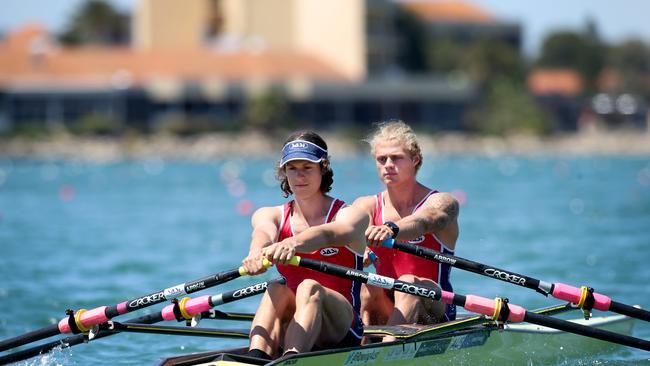Put some effort into getting ahead of surging sport costs
Families are forking out record amounts of money to cover sport-related costs. Money experts say there are ways to reduce the potential budget pain.
Saver HQ
Don't miss out on the headlines from Saver HQ. Followed categories will be added to My News.
PLAYING sport has become much more expensive for Australians, prompting warnings for participants to plan for rising costs while remaining active.
New Australian Bureau of Statistics data shows sports participation expenses climbed 67 per cent in the past 15 years, much more than the increase in overall inflation of 43 per cent.
Reasons for the rise include surging club fees and a boom in sport-related gadgets and fitness trackers. Finance specialists say most expenses aren’t one-off surprises and should form part of household budgets.
The latest government figures show 58 per cent of adults and 69 per cent of children participate in sport-related activities.
DAVID & LIBBY KOCH: Make money teamwork a habit
Beyond Bank’s general manager of customer experience, Nick May, said putting aside money for sport and exercise was important.
“Your health should not be a discretionary item and it is often when things get stressful that fitness is most important,” he said.

Mr May said weekend warriors, elite athletes and fitness fanatics alike could spread many costs using weekly and monthly instalments.
“Most sports come with a price tag that you need to factor in,” he said.
“Making sure you have worked these costs into all your other living expenses is really important. It means you are able to cover seasonal bills like club fees when they come up rather than panicking and worst case, giving up on exercise.”
Rowers Oscar McGuinness and Mitch Reinhard benefit from rowing scholarships covering big costs such as interstate and overseas travel, but they still must juggle other expenses.
“Club memberships can be expensive, varying from $100 to $700 for a season. There are also day to day costs to consider such as food and petrol,” Mr McGuinness said.
“We are more likely to bring food from home to eat post session rather than eating out which will most likely cost $10-$20.
“I think the most valuable lesson I have learnt is that teaming up with your mates can make a big difference. Splitting costs by carpooling or buying food in bulk and dividing it all adds up and makes a big difference.”
Children’s sport has become a big strain on household budgets as families enrol kids in an unprecedented amount of extra-curricular activities.
MBA Financial Strategists director Darren James said his children had recently switched football codes — from Aussie rules to soccer — and club fees had jumped from $130 to $1250 a season.
“Some junior clubs charge $3000 a pop and they’re still turning kids away. It’s something people have to budget for.”
Children’s lives used to revolve around their parents’ activities but now kids were the most important people in many homes, Mr James said.
“There’s a lot of keeping up with the Joneses and having kids do too much. When I grew up it was footy, and that’s it.”
COSTS TO WATCH
• Equipment is rarely a one-off purchase and needs to be updated regularly.
• Accessories such as protective gear can be pricey, and performance trackers such as smartwatches can cost $1000-plus.
• Club fees, coaching and subscriptions can set you back more than $1000 too.
• Medical costs — either to repair injuries or prevent them — are usually unavoidable.
• Travel for both yourself and your equipment adds up quickly, especially when long distances are involved.
Source: Beyond Bank Australia
Originally published as Put some effort into getting ahead of surging sport costs


